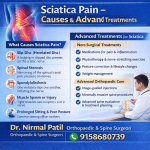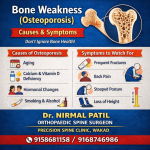In today’s digital age, screens have become an inseparable part of our lives. From smartphones and laptops to tablets and televisions, we are constantly exposed to digital devices — for work, study, entertainment, and even social interaction. While technology has made life convenient, it comes with a downside: digital eye strain. One of the most common and troubling outcomes of excessive screen time is Dry Eye Syndrome.
In this blog, we’ll explore how screen usage contributes to dry eyes, what symptoms to watch for, and most importantly, how to protect your eyes in the digital world.
🔍 What is Digital Eye Strain?
Digital Eye Strain, also known as Computer Vision Syndrome, is a group of eye and vision-related issues that result from prolonged use of digital screens. It affects people of all ages — from school children attending online classes to IT professionals working 9-hour shifts.
The most common complaint associated with digital eye strain is dry eyes — a condition where the eyes do not produce enough tears or the tears evaporate too quickly, leaving the eyes dry, irritated, and uncomfortable.
💧 What is Dry Eye Syndrome?
Dry Eye Syndrome occurs when the eye either:
- Doesn’t produce enough tears (aqueous deficiency), or
- Produces poor-quality tears that evaporate too quickly (evaporative dry eye).
Tears are essential for maintaining the health of the front surface of the eye and for providing clear vision. Without adequate lubrication, the eyes become dry, inflamed, and more prone to infections and vision issues.
📉 How Screen Time Worsens Dry Eyes
Let’s understand the direct link between screen time and worsening dry eyes:
1. Reduced Blinking Rate
One of the key functions of blinking is to spread a thin layer of tears over the surface of the eye. This tear film nourishes, protects, and lubricates the eye.
However, studies show that people blink 60% less while using screens.
- Normal blinking rate: 15–20 blinks per minute
- During screen use: 5–7 blinks per minute
Less blinking means less lubrication, and over time, this causes the tear film to break up — resulting in dryness, irritation, and eye fatigue.
2. Increased Tear Evaporation
Prolonged screen exposure reduces the stability of the tear film. When your eyes remain open for long periods without blinking, the tears on the surface evaporate rapidly.
This is especially problematic in:
- Air-conditioned rooms
- Dry, dusty environments
- Areas with low humidity
This evaporation worsens dry eye symptoms and increases the risk of chronic dry eye disease.
3. Improper Workstation Setup
Many users do not maintain ideal screen distance or angle. Looking upward at a screen (like with laptops placed too high) exposes more of the eye surface, increasing tear evaporation.
Poor ergonomics like:
- Wrong screen height
- Harsh lighting or glare
- Incorrect monitor distance
can all contribute to visual discomfort and dry eyes.
4. Blue Light Exposure
Digital devices emit high-energy blue light, which can penetrate deep into the eye and cause oxidative stress. Prolonged exposure to blue light is known to cause:
- Inflammation of the ocular surface
- Increased oxidative damage
- Tear film instability
While blue light doesn’t directly cause dry eyes, it worsens the inflammation already present in dry eye conditions.
5. Extended Screen Time Without Breaks
Continuous use of screens for hours without rest strains the muscles that control eye movement and focus. Over time, this muscle fatigue contributes to symptoms of digital eye strain, including:
- Burning sensation
- Blurred vision
- Tearing
- Redness
When the eyes are constantly focused, they don’t get the opportunity to relax or reset their tear balance — leading to chronic dryness.
⚠️ Common Symptoms of Dry Eyes from Digital Eye Strain
You may be suffering from digital-related dry eye syndrome if you experience:
- Gritty or sandy feeling in the eyes
- Redness or bloodshot eyes
- Itching or burning sensation
- Sensitivity to light
- Blurred or fluctuating vision
- Eye fatigue or heaviness
- Excessive tearing (a reflex to dryness)
- Difficulty wearing contact lenses
👨💻 Who Is at Risk?
The risk is highest among:
- IT professionals
- Students (especially in online learning setups)
- Mobile phone addicts
- Content creators, designers, and gamers
- Teachers and telecallers
- Senior citizens with pre-existing dry eye issues
Even children are not immune, especially with increasing digital learning platforms and online screen exposure at an early age.
🛡️ How to Prevent and Manage Dry Eyes from Screen Time
The good news is — you can protect your eyes with a few simple lifestyle changes and treatments.
✅ 1. Follow the 20-20-20 Rule
Every 20 minutes, look at something 20 feet away for at least 20 seconds.
This allows your eyes to relax and helps reset your blinking rate.
✅ 2. Blink Consciously
Make a habit of blinking fully and frequently while using screens.
Try blinking exercises during short breaks to improve tear distribution.
✅ 3. Use Artificial Tear Drops
Over-the-counter lubricating eye drops can help replenish moisture on the eye surface.
Always consult your eye doctor before using any drops long-term.
✅ 4. Adjust Your Screen Setup
- Keep the monitor slightly below eye level
- Maintain a screen distance of 20–28 inches
- Use anti-glare screens or blue light filters
- Adjust brightness and contrast to match ambient lighting
✅ 5. Stay Hydrated and Eat Right
Drink plenty of water and consume foods rich in omega-3 fatty acids, such as flaxseeds, walnuts, and fish, to support healthy tear production.
✅ 6. Limit Screen Time
Take regular breaks from all types of screens, including smartphones.
Encourage children to spend more time on outdoor activities than indoor gaming or YouTube.
✅ 7. Seek Medical Help
If symptoms persist, you might be suffering from moderate to severe dry eye syndrome and need professional evaluation.
Contact us on 9168690448 / 9158681123
Website – www.chetnahospital.co.in
Sambhajinagar, MIDC, G Block, Near Rotary Club, Chinchwad 411019
.
.
.
#hospital#pune#pcmc#chinchwad#medical#medicalservices#dryeyetreatment#dryeyerelief#dryeyedisease#dryeyetherapy#catract#catractsurgery#catracteyesurgery#catracteyeoperation#eyedoctor#eye#glaucoma#conjunctivitis#ophthalmologist#eyediseases#eyepain#pinkeye#hazeleyes#myopia#eyeinfection#amblyopia#dryeyesyndrome#eyeproblems#motibindu#motibinduoperation













